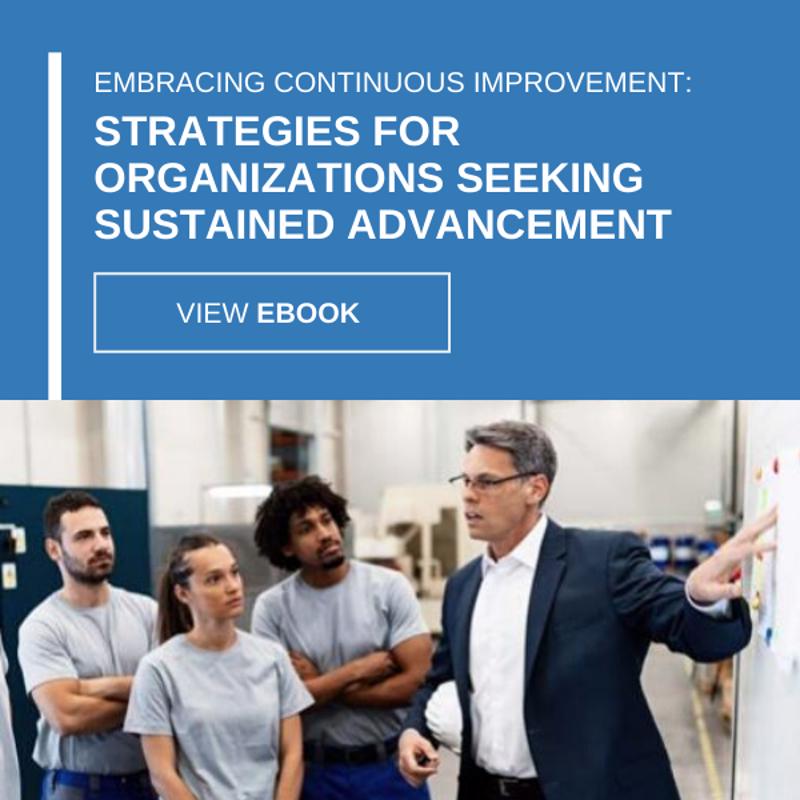-
Subscribe to Blog:
SEARCH THE BLOG
CATEGORIES
- Aerospace
- Asset Maintenance
- Automotive
- Blog
- Building Products
- Case Studies
- Chemical Processing
- Consulting
- Food & Beverage
- Forestry Products
- Hospitals & Healthcare
- Knowledge Transfer
- Lean Manufacturing
- Life Sciences
- Logistics
- Manufacturing
- Material Utilization
- Metals
- Mining
- News
- Office Politics
- Oil & Gas
- Plastics
- Private Equity
- Process Improvement
- Project Management
- Spend Management
- Supply Chain
- Uncategorized
- Utilities
- Whitepapers
BLOG ARCHIVES
- July 2025 (1)
- June 2025 (4)
- May 2025 (1)
- April 2025 (1)
- March 2025 (1)
- February 2025 (4)
- January 2025 (4)
- December 2024 (4)
- November 2024 (2)
- October 2024 (6)
- September 2024 (5)
- August 2024 (5)
- July 2024 (6)
- June 2024 (3)
- May 2024 (3)
- April 2024 (4)
- March 2024 (3)
- February 2024 (4)
- January 2024 (5)
- December 2023 (2)
- November 2023 (1)
- October 2023 (6)
- September 2023 (3)
- August 2023 (4)
- July 2023 (2)
- June 2023 (3)
- May 2023 (7)
- April 2023 (3)
- March 2023 (3)
- February 2023 (5)
- January 2023 (6)
- December 2022 (2)
- November 2022 (5)
- October 2022 (5)
- September 2022 (5)
- August 2022 (6)
- July 2022 (3)
- June 2022 (4)
- May 2022 (5)
- April 2022 (3)
- March 2022 (5)
- February 2022 (4)
- January 2022 (7)
- December 2021 (3)
- November 2021 (5)
- October 2021 (3)
- September 2021 (2)
- August 2021 (6)
- July 2021 (2)
- June 2021 (10)
- May 2021 (4)
- April 2021 (5)
- March 2021 (5)
- February 2021 (3)
- January 2021 (4)
- December 2020 (3)
- November 2020 (3)
- October 2020 (3)
- September 2020 (3)
- August 2020 (4)
- July 2020 (3)
- June 2020 (5)
- May 2020 (3)
- April 2020 (3)
- March 2020 (4)
- February 2020 (4)
- January 2020 (4)
- December 2019 (3)
- November 2019 (2)
- October 2019 (4)
- September 2019 (2)
- August 2019 (4)
- July 2019 (3)
- June 2019 (4)
- May 2019 (2)
- April 2019 (4)
- March 2019 (4)
- February 2019 (5)
- January 2019 (5)
- December 2018 (2)
- November 2018 (2)
- October 2018 (5)
- September 2018 (4)
- August 2018 (3)
- July 2018 (2)
- June 2018 (4)
- May 2018 (3)
- April 2018 (3)
- March 2018 (2)
- February 2018 (2)
- January 2018 (1)
- December 2017 (1)
- November 2017 (2)
- October 2017 (2)
- September 2017 (1)
- August 2017 (2)
- July 2017 (2)
- June 2017 (1)
- April 2017 (3)
- March 2017 (3)
- February 2017 (2)
- January 2017 (2)
- December 2016 (2)
- November 2016 (4)
- October 2016 (4)
- September 2016 (3)
- August 2016 (6)
- July 2016 (4)
- June 2016 (4)
- May 2016 (1)
- April 2016 (3)
- March 2016 (4)
- February 2016 (2)
- January 2016 (4)
- December 2015 (3)
- November 2015 (3)
- October 2015 (1)
- September 2015 (1)
- August 2015 (4)
- July 2015 (6)
- June 2015 (4)
- May 2015 (7)
- April 2015 (6)
- March 2015 (6)
- February 2015 (4)
- January 2015 (3)
CONNECT WITH US
Tag Archives: Resource Capacity
Demand is back. After many industries saw customer demand dry up during the pandemic, it is surging like it hasn’t in a long time. Consumers are spending money again. That’s the good news. The bad news? Companies across many industries, especially manufacturing, are struggling to meet that demand.
The reasons for this are as varied and unique as every company out there, but we are seeing a one-two punch creating capacity limits among our clients: the tight hiring market coupled with supply chain disruptions. So, how can businesses overcome these restraints and get ahead in the current landscape? First, let’s understand the issues at hand.
The hiring problem
We haven’t seen this tight of a hiring market in two decades or more. Businesses in many industries were forced to lay off or furlough workers during the pandemic, and now that demand is back up, they’re finding it next to impossible to fill those shoes, or in many workplaces, steel-toed boots. Why? The pandemic caused employees of all stripes to rethink their life choices. Maybe they don’t want to work in a manufacturing facility, or retail shop, or in a cubicle anymore. The result of that is what economists are calling “The Great Resignation.” According to the U.S. Department of Labor, 4 million people up and quit their jobs in April 2021. In May, that number dipped “all the way down” to 3.6 million, but by the time June rolled around, it was back up to 3.9. We haven’t seen this kind of mass exodus in generations, if ever. Make no mistake, the jobs are out there. Companies in all industries are scrambling, even desperate, to fill them. But this is not a matter of “if you post it, they will come.” They’re not coming.
The supply chain problem
Yes, many restrictions have been lifted, but supply chain snags, roadblocks, disruptions and downright stoppages continue to bedevil many industries. So even if you have enough people to get the job done, the supplies may or may not be there when you need them.
The hiring crunch and supply chain double whammy, combined with skyrocketing demand, is creating a difficult situation out there for many industries.
How USC Consulting Group can help
When it comes right down to it, meeting increased demand with fewer workers and a disrupted supply chain means one thing: Getting the job done requires increasing your operational efficiency. At USC Consulting Group, that’s our specialty. We’ve been doing it for 50-plus years. But it’s not easy. Sure, everyone wants to do more with less. But how, exactly? Here are some ways we find work well to ferret hidden opportunities for greater efficiency.
Engage the line. This means getting up close and personal with anyone who has anything to do with the production line, mining their expertise about what’s working and what’s not, and looking closely at the job on an hour-by-hour basis. Looking at the operation through that lens, you’ll be surprised what you can find.
Get a firm handle on capacity. How much is actually possible to produce? How much time will it take?
Rethink your staffing. How many people will it really take to get the job done? Looking at the operation with an eye toward people power, you may find you can get the job done with fewer employees. Which is good news for companies scrambling during this hiring crunch.
Scrutinize the management operating system. This is about how you plan your work, assign it and follow up to ensure the job is getting done. Make this part of your business a well-oiled machine.
Get real about throughput. What is the ideal “drumbeat” of your production line? Are things moving at the right speed? But, this isn’t just about speed. It’s about producing good product faster.
In the end, we use these and other strategies to uncover opportunities for efficiency and help companies meet rising demand even with the constraints they’re facing today. If you’d like to read about this topic in more depth, download our whitepaper, “Strategies for Meeting Customer Demand” or give us a call today. We’re ready to help.
If you have noticed — or, in many cases, been run over by — dramatically increasing customer demand for your products, you’re not alone. Now that restrictions have been lifted in many parts of the country, and the world, consumers are spending money again. And spending. And spending. All of that increased customer demand translates to the need for ramped-up production across a wide swath of industries, from manufacturing to mining to agriculture to pulp and paper — and the list goes on. Some pundits are predicting an economic boom the likes of which this country hasn’t seen since the last Roaring ’20s. They’re calling it a “supercharged rebound,” one that may well lead to many years of strong growth. That’s great news!
The problem is the speed at which it’s coming and the capacity of companies to meet that demand.
Download USC Consulting Group’s white paper Strategies for Meeting Increasing Customer Demand today. We’ll look deeper into this issue, the reasons for the disconnect between demand and the ability to meet it, and overcoming challenges such as supply chain disruptions and the hiring crunch.
Why is USC uniquely qualified to help?
We were founded as Universal Scheduling Company in 1968. Back then, it was all about shop floor control and working with employees to find out how to get more work done. We spent years refining our capabilities and analyzing processes. We’re up and down the supply chain now. We do organizational design, spend analysis, strategic sourcing. But the heart and soul of our business has been built on getting more efficiency on the shop floor, helping companies do more with less, and increasing operational efficiencies overall.
We’re not like the consultants who started at the high level and then dabbled with the floor. They don’t get out on the shop floor very often. We built our business from the floor up. We’ve had our (steel-toed) boots on the ground for more than 50 years. We’re most comfortable where they’re most uncomfortable. Getting out on the floor — it’s where we live.
If you’d like to learn more about how we work, or talk with us about strategies you can use to harness your existing assets to meet your growing customer demand, please get in touch today.
What do you do when your demand is greater than your ability to meet it? This is one of the big issues some of our clients in the metals industry are facing these days as increased demand is matching or exceeding what is believed to be their capacity. Facing that situation, what can be done other than turning down sales?
Our customers who are dealing with demand management problems tend to come to us when they’re mired in what they believe is a lesser-of-two-evils choice. An option can be to increase capacity by investing in new capital assets but this involves investing millions of dollars and will demand be there given the long lead time for those assets. A possible second option is to increase capacity by expanding the hours of operation either by hiring additional staff or through overtime. Again, this leads to an increase in costs, especially if hiring additional staff also has a lead time as employees are hired and trained. So they come to us looking for a third option: Doing more with the assets they already have.
At USC Consulting Group, that’s our wheelhouse. It’s what we’ve been doing for companies for over 50 years.
We’re not about telling our clients to throw out machinery that’s working pretty well, open their wallets, and upgrade to state-of-the-art technology. Most of the time, that’s a huge expense that’s just not necessary. Instead, we do the hard work of rolling up our sleeves and finding hidden opportunities for improvements with your current assets. It’s about doing more with what you have and overcoming demand management problems.
Hidden opportunities
What are hidden opportunities, exactly? They are efficiencies in your operation that you’re not aware of. We find them by first listening to you describe your issues, bottlenecks and stumbling blocks. Then, we look at your existing management operating system and standard work procedures like a detective, looking for ways to kick your efficiency up a notch. We find the opportunities that you may not see. Nine times out of ten, we find them by looking at issues that are generally accepted as “just the way things are.” A few examples:
- Excessive cycle time. Cycle time to produce a part could be reduced by redistributing the work between cycles so that more of the activities take place in parallel vs. in series.
- Excessive time for changeovers on a machine. There are activities that could be started and even completed before the changeover starts.
We start the process of finding hidden opportunities by finding the answers to a few questions.
- Where is the problem?
- Is it technical or tactical?
- Is it feasible?
If it’s technical, maybe it’s time to bring in the engineers to improve on your machines’ functions. If it’s tactical, we look at your processes, the way you’re using those machines, to find those hidden efficiencies.
We also take a hard look at the feasibility of your goal. If you’re producing 900 tons per day and the demand is 1,100, can we reasonably get you there? Sometimes the answer is no. Sometimes we can split the difference and get you close to the goal. Sometimes we can hit that goal and then some.
Why frontline buy-in is essential
At times, our recommendations for new efficiencies in your time-tested processes might ruffle some feathers, especially those of your crews on the frontlines, men and women who are doing those jobs for a living. That’s why we involve them from the beginning. We don’t swoop in at the end of our process and hand them a playbook on how to do their jobs better. Instead, they help us write that playbook. Your frontline employees’ buy-in is crucial to the success of any changes you want to make.
Frankly, working with your frontline employees makes our job easier, too. They give us the lowdown on what’s happening in your operation. We hear what’s going right, and at times, what’s going wrong. They often can see what the problems are, but not know how to fix them. We can get the single source of truth from your frontlines and implement plans to fix the issues and improve productivity. It’s crucial to finding where efficiencies can happen.
To read more about how crucial frontline buy-in is to the process, read our blog, Why Getting Buy-in from Frontline Employees is Key.
At USCCG, we pride ourselves in finding hidden opportunities for efficiencies that will help smooth out bottlenecks and allow our customers to meet growing demand with their current assets. Please get in touch if you’d like to find out more.
For a deeper look at demand management problems and other challenges and how we find hidden opportunities in Metals manufacturing operations, download our free eBook: “Challenges For The Metals Industry: How USC Consulting Group Can Help”
The steady, daily drumbeat of negative news in March and April was hard to ignore. From rising unemployment rates to businesses large and small struggling to stay afloat and entire industries in virtual standstill due to social distancing measures and shutdown restrictions, most reported news was pretty bleak.
As more states look to revitalize their economies, some much needed signs of encouragement have taken root. Defying expectations, 2.5 million jobs were added to the economy in May, according to the Department of Labor. The jobless rate nationwide lowered over a full percentage point from 14.4% in April to 13.3% in May. Retail sales increased by almost 18% overall compared to April – and a whopping 188% among clothing stores, Yahoo.com reported. Consumer confidence is back on the mend as well.
After a difficult stretch, these positive developments have been a sight for sore eyes. But even when coronavirus infections were at their peak, many companies and industries were able to make some strategic adjustments, which enabled them to come out on the other side as strong as they were before. In some cases, even stronger.
Business booms for Peloton
If there was one thing that more people did a lot more of during the lockdown than they did before, it was home-based workouts. This was largely due to the fact that so many health clubs and gyms were closed due to the high-touch nature of the activities that take place in fitness centers.
One of the manufacturers that was able to take advantage of this change in people’s workout habits was Peloton. Launched in 2012, Peloton specializes in stationary bikes featuring a sleek design and easy-to-use interface in the touchscreen.
The New York City-based firm sold millions of said bicycles in the first quarter. As reported by The Mercury News, revenue surged 66% for Peloton compared to the same three-month period in 2019 and membership for its app rose by 30%. In addition to bikes, Peloton sold many other types of work-from-home exercise equipment, including treadmills, and its Mirror home workout system.

As is frequently the case when demand outstrips supply, Peloton was unable to ship orders to customers in as timely a manner as they do normally. However, by adjusting consumer expectations and through strategic asset management, they were still able to fulfill orders without too much inconvenience for buyers. In fact, the company chose to take a hit on profit margins in order to expedite shipping. The fact that the company continues to produce bikes at an elevated clip – given the fact that they remain very much in demand, even with gyms now starting to reopen – is a testament to the company’s ability to adjust and come through on customer satisfaction.
“The shelter in place and work from home realities … created a meaningful tailwind for Peloton,” John Foley, chief executive at Peloton, told the Financial Times. Between late March and early May, over 1.1 million people downloaded the Peloton Digital app, Foley added.
Although Peloton also offers classes through its digital app that do not require significant equipment beyond dumbbells and a bench, the high number of downloads speaks to the sheer volume of people who purchased the products and accessories that the manufacturer brought to market in a fairly short period of time.
Sales surge for disinfectant suppliers and manufacturers
Given the highly contagious nature of COVID-19 – which can be spread on surfaces as well as in the air, health experts say – cleaning supplies were and remain hot-ticket items. While blue chip stocks experienced massive declines on Wall Street, shares for companies like Clorox soared, rising 17% to $22.7 billion at one point, according to Slashgear.
Reckitt Benckiser, the maker of household cleaning products like Dettol and Lysol, also saw significant growth. As quickly as spray bottles and canisters were boxed, shipped and delivered, they were snatched up by buyers. The surge in demand ultimately led to temporary shortages for grocers, drug stores and big box retailers.
“Out-of-stock” signs would have remained in place for much longer had the U.K.-based consumer goods company not adapted and shored up its workforce.
Speaking to the South China Morning Post, Reckitt Benckiser Chief Executive Officer Laxman Narasimhan said this required refining its processes so its main factories could operate at maximum capacity. This often meant increasing the number of shifts from what used to be one or two to three.
“We have increased production in many parts of the world,” Narasimhan told the paper in April. “We’re simplifying what we do to get the most out of our factories, so that products that are needed right now can be made available.”
Digital transformation on front burner
While strong sales, increased demand and leaner processes are always encouraging, the companies that experienced it likely wish it were under different circumstances. Some fear that there could be a second wave of coronavirus cases, which raises the potential of another lockdown.
Understanding this possibility, more manufacturers and suppliers are applying lessons they learned from the past few months so they can better respond and adapt if history repeats itself. Chief among those actions is focusing more on digital transformation.

“COVID-19 is vastly accelerating digital transformation,” said Mary Long, director of the Supply Chain Forum at the University of Tennessee Knoxville, in an interview with Supply Chain Dive. “We just took a huge leap forward. Companies that have always taken the safe, always-as-it-was approach are suddenly looking at anything that takes touches out of the system.”
These include initiatives such as robotics, analytics, big data, internet of things and enterprise resource management software.
Some companies may think they have to work harder to compete better for those that didn’t fare as well during the lockdown. That’s not necessarily the case. USC Consulting Group can help you work smarter so your company becomes stronger and more resilient in the face of adversity. Contact us today to learn more about who we are and what we do.










